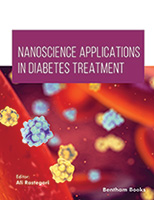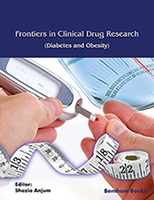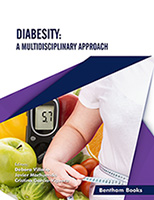FOREWORD:
NUTRITION, PHYSICAL ACTIVITY AND THE
RISK OF OBESITY DURING CHILDHOOD
Since several decades, childhood overweight steeply increased, but after around the year
2000, a plateau or even a decline in prevalence rates has been reported in many industrialized
countries (Rokholm et al., 2010). However, the problem remains important, since the
prevalence of childhood obesity is still high in many countries.
While prevalence of childhood obesity was increasing, energy intake was decreasing,
particularly due to decreasing fat intake (Rolland-Cachera 2002; Gibson 2010; Alexy et al.
2002). This paradoxical situation can be explained by decreasing physical activity and
increasing sedentary lifestyle (Butte et al. 2007). Indeed, exercise has beneficial effects
limiting the development of obesity and improving fitness in children (Kellou et al. 2014;
Pařízková 2008).
Decreased energy intake is reported in all age groups, but the hypothesis of decreasing
physical activity to account for by decreasing energy intake is less convincing in very young
children. Other factors may explain the rising trend of obesity. The role of environmental
factors in early life in predicting later health has generated substantial interest in recent years
(Hanley et al. 2010).
The early adiposity rebound recorded in most obese subjects (Rolland-Cachera et al. 2006)
suggests that factors promoting body fat development have operated in the first years of life.
Particularly, early nutrition can exert long-lasting influence on health. Birth weight, growth
velocity, adiposity rebound and body mass index trajectories seem to be highly sensitive to
the nutritional conditions present during pregnancy and in the first years of life. Early
inadequate nutrient balance in early life may account for by the paradox of increasing obesity
and decreasing energy intake. The low protein-high fat diet recorded in many young children,
which contrasts with the low protein-high fat composition of human milk, may favour the
development of obesity (Rolland-Cachera et al. 2006; Michaelsen and Greer 2014; Rolland-
Cachera et al. 2013). High protein intake can promote overweight via increasing Insulin like
growth factors 1 and dietary fat restrictions can decrease energy density, thus programming
adaptive metabolism to prevent underweight and increasing the susceptibility to develop later
overweight and metabolic diseases (Rolland-Cachera et al. 2013). A “mismatch” between
early restrictions and later positive energy balance due to increasing fat intake and low energy
expenditure due to sedentary lifestyle could be particularly harmful.
In conclusion, nutrient balance of the diet varies according to the age of the child. In spite of
official recommendations that dietary fat should not be restricted in young children, fat intake
is often low in early life and increases with age. It should be high in early childhood and
decrease with age. The high protein low fat diet recorded in early life, and low physical
activity in children may have contributed to the obesity epidemic. The consequences of
inadequate nutrition at different ages, and the rising sedentary lifestyle in children stress the
importance of providing nutritional intakes adapted to the child’s metabolic needs at the
various stages of growth and of promoting physical activity which contributes to an optimal
energy balance and improves health and fitness.
REFERENCES
Alexy, U., Sichert-Hellert, W., Kersting, M. (2002). Fifteen-year time trends in energy and
macronutrient intake in German children and adolescents: results of the DONALD study. Br. J. Nutr.,
87(6), 595-604.
[http://dx.doi.org/10.1079/BJN/2002572] [PMID: 12067430]
Butte, N.F., Christiansen, E., Sørensen, T.I. (2007). Energy imbalance underlying the development of
childhood obesity. Obesity (Silver Spring), 15(12), 3056-3066. [Silver Spring].
[http://dx.doi.org/10.1038/oby.2007.364] [PMID: 18198315]
Gibson, S. (2010). Trends in energy and sugar intakes and body mass index between 1983 and 1997
among children in Great Britain. J. Hum. Nutr. Diet., 23(4), 371-381.
[http://dx.doi.org/10.1111/j.1365-277X.2010.01059.x] [PMID: 20337846]
Hanley, B., Dijane, J., Fewtrell, M., Grynberg, A., Hummel, S., Junien, C., Koletzko, B., Lewis, S.,
Renz, H., Symonds, M., Gros, M., Harthoorn, L., Mace, K., Samuels, F., van Der Beek, E.M. (2010).
Metabolic imprinting, programming and epigenetics - a review of present priorities and future
opportunities. Br. J. Nutr., 104 (Suppl. 1), S1-S25.
[http://dx.doi.org/10.1017/S0007114510003338] [PMID: 20929595]
Kellou, N., Sandalinas, F., Copin, N., Simon, C. (2014). Prevention of unhealthy weight in children by
promoting physical activity using a socio-ecological approach: What can we learn from intervention
studies? Diabetes Metab., pii: S1262-3636(14)00029-9 [Epub ahead of print].
[http://dx.doi.org/10.1016/j.diabet.2014.01.002] [PMID: 24698814]
Michaelsen, K.F., Greer, F.R. (2014). Protein needs early in life and long-term health. Am. J. Clin. Nutr.,
99(3), 718S-722S.
[http://dx.doi.org/10.3945/ajcn.113.072603] [PMID: 24452233]
Parizkova, J. (2008). Impact of education on food behaviour, body composition and physical fitness in
children. Br. J. Nutr., 99 (Suppl. 1), S26-S32.
[http://dx.doi.org/10.1017/S0007114508892483] [PMID: 18257949]
Rokholm, B., Baker, J.L., Sørensen, T.I. (2010). The levelling off of the obesity epidemic since the year
1999--a review of evidence and perspectives. Obes. Rev., 11(12), 835-846.
[http://dx.doi.org/10.1111/j.1467-789X.2010.00810.x] [PMID: 20973911]









